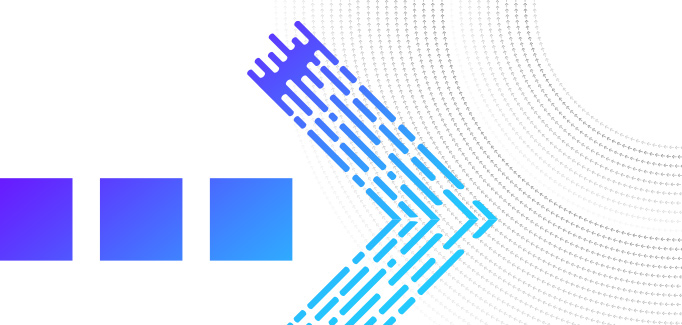Future Proofing Fraud with Advanced Technologies
December 22nd, 2020

This blog series acts as a companion to the sessions at ENGAGE LIVE. Catch up on the other entries here:
- Looking Back at ENGAGE 2020
- Immediate Action Required: Detecting Authorised Fraud
- Stay Ahead of First-Party Fraud & Mule Activity
- Catch Me if You Can: Fraud Digital Identity Challenges
- Fraud: AI in Action
- The Journey to Autonomous Fraud Management
At ENGAGE, we heard about how the demands of today’s payments and frauds systems are seeing a data explosion. We covered how the use of advanced technologies can help future-proof fraud systems. In this blog, I’ll cover the issues leading to the data explosion and what can be done to take advantage of this.
Over the last few years, we’ve seen the level of data really take off. Globally, the amount of data estimated for 2020 is 59 Zetabytes, 30 times more than in 2010! Banking and payments are no exception to this increase, so what is driving it?
Future-Proof Fraud: Huge Data Increase
Firstly, we have a range of channels. No longer are we limited to branch, telephony and web, but now a mobile app is the channel of choice. Digital channels produce more data, and much of this is particularly useful in fraud prevention, such device data. With the use of biometrics increasing, we are even seeing the extra data come to telephony, too. There is also the rise of Open Banking. This brings many more players into the payments ecosystem, requiring increased verification and authentication steps, and therefore more messages to make it all work.
We are also seeing other new channels like Chatbots, Alexa and payments moving into chat apps. These all offer customers different ways to interact with their FI. However, what we’ve seen in the past is that these channels often don’t completely cannibalise the previous channels, but instead lead to overall increases in transactions. When I could only check my balance at an ATM, I used to do it once a week; now I might check my balance multiple times a day via the app.
All these changes in channels lead to large increases in volumes of payments and overall transactions. With this will usually come an increase in alert volumes, and therefore the staff that need to manage these. This is not a scalable solution if the speed and efficiency benefits of digital payments are to be realised.
Future-Proof Fraud: Real-Time Payments
Secondly, there is the increasing use of real-time payments throughout the world. This includes Faster Payments and Instant SEPA in Europe and Zelle, RTP, FedNow in the U.S. and the RTR in Canada, to name a few, with the majority using ISO20022. ISO20022 is a rich data standard and supports more structured data. Again, much of this is good for fraud prevention such as longer beneficiary names. But it’s not only national payment schemes that are going faster, but also cross-border.
Within the cross-border payments space, there are a few additional changes taking place. While using blockchain or other digital ledger technology (DLT) grabs a lot of headlines, good old databases and central bank payment systems are making significant changes. When people usually think about cross-border payments they think slow, multi-day processes and high processing costs. However, this is increasingly not the case. SWIFT released figures stating that for payments sent over their new GPI interface, about 50 percent get to their destination account in under 30 minutes. A test payment from Singapore to Australia (both with new real-time payment services at the end points) was sent and received in just 13 seconds. And now, LBG was the first bank to connect to SWIFT GPI Instant. This means that payments can credit UK accounts in seconds.
The combination of these new channels and the speed of real-time payments (and COVID) means that genuine customer and fraudster behaviour are changing faster than ever before. Fraud is also increasingly moving to identity fraud and authorised fraud, bringing new challenges for consumers and banks alike.
In order to meet these challenges, having a roadmap to cope is key. Firstly, move to technologies that can support high volumes at high performance. A good example is using Casandra NOSQL databases to speed up response times.
You may be asking, but how can I get more data into the engine faster without long and expensive projects? Using data streaming technologies such as Kafka can simplify and speed up the process of bringing the data of key third-party solutions into the fraud engine. This combined data set can then react to new fraud threats.
Once you’ve done this, what else can you do to use this new power? Bring multiple channels and payment rails together to create a fraud hub. This helps in removing silos and combating the increase of cross-channel fraud.
Building on this, bring additional data points into the hub such as device data, behavioural biometrics and location data. This allows you to run multiple models within the hub systems, for example looking for mules and first-party fraud, as well as a third-party model, social engineering or APP models.
Now with containers and Kubernetes, we can deploy new models quickly and easily, reducing costs and getting to business values faster.
To help reduce false positives, create customer and transaction profiles, along with entity profiles on Open Banking participants, as well as devices. The capabilities of a database such as Casandra mean that such profiles can be updated in real time.
The future is here now and the time to do something about it is also now. As I’ve shown, new technologies are here to help deal with the challenges that FIs face and can help meet the increasing demands of customers in a real-time, digital-based future.




